The Ferrari 812 Superfast lives up to its name – and then some

First, an apology. Not long ago, I declared the 5.2-litre V10 in the Lamborghini Huracan Evo was the best engine of any new car. Reader, I was wrong. Henceforth, let the record show that the 6.5-litre V12 in the Ferrari 812 Superfast is the finest, most exciting engine (a lot of) money can buy. With the possible exception of the Cosworth V12 in Gordon Murray’s forthcoming T.50 hypercar, it’s likely to remain that way.
There’s a row of F1-style shift lights atop the 812 Superfast’s steering wheel. Illuminating left to right, the first seven are red, then the last two – as you near the 8,800rpm limiter – are bright blue. See those blue LEDs, even in second gear, and you’ll be traveling, well… super fast. With 800hp igniting its rear P Zeros, the Ferrari blasts to 62mph in 2.9 seconds and 124mph in 7.9 seconds. V-max is 211mph.
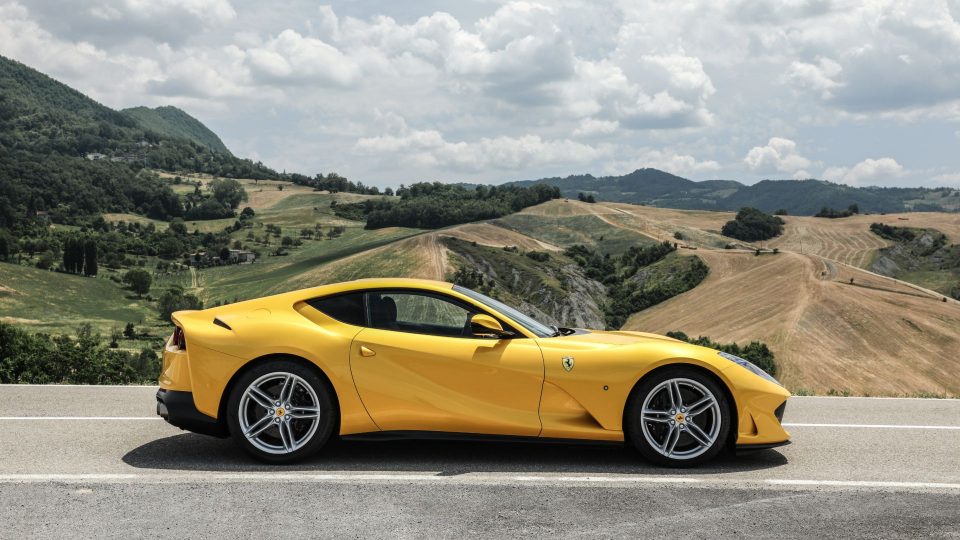
Still, other supercars serve up that kind of speed. What sets the Ferrari apart is how it gets there. Aside from the soon-to-be-replaced Lamborghini Aventador, this is the only naturally aspirated V12 still in production. That means no turbochargers, no superchargers, no electric motors: just searing throttle response and a ravenous hunger for revs.
Many great Ferrari engines were free-breathing V12s, designed by the likes of Colombo and Lampredi, yet emissions legislation could make this the last of the line.
The Superfast also evokes Ferrari icons such as the 275 GTB and Daytona in its front-engined, rear-wheel-drive configuration. With an indulgently long bonnet, voluptuous haunches and chopped ‘Kamm’ tail, it looks every inch the classic gran turismo. However, lift that bonnet and the V12 is so far back it’s almost mid-engined, resulting in near-perfect 47:53 weight distribution. It’s one clue to this car’s split personality.
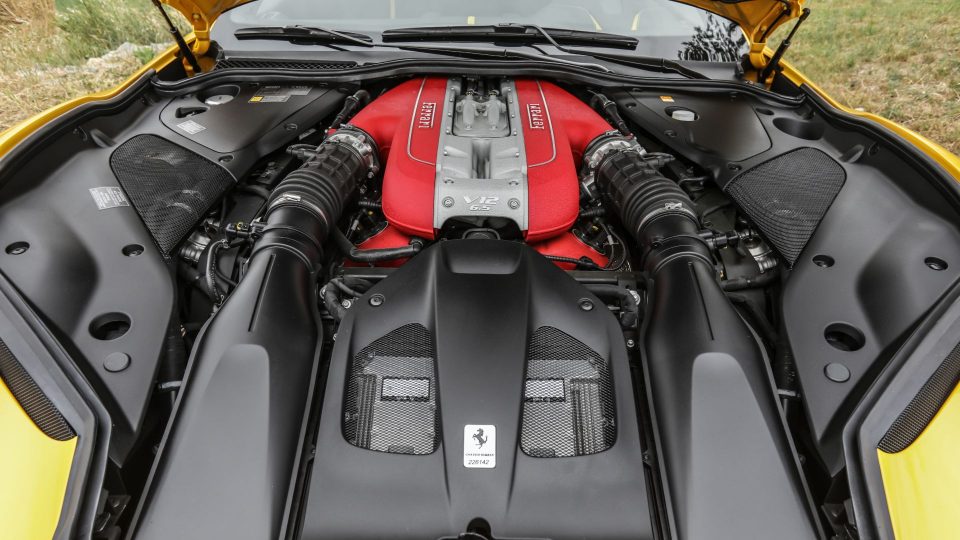
Let’s deal with Dr Jekyll first. The 812 isn’t as plush or practical as a Bentley Continental GT, but its two-seat cabin is swathed in tactile Alcantara and its hatchback boot holds 320 litres – sufficient for a set of golf clubs or a week in St Tropez.
Twin infotainment screens sit either side of a giant analogue rev counter and the three-spoke wheel is home to Ferrari’s familiar manettino, offering a choice of drive modes from Wet to Race. It feels comfortable, yet firmly driver-focused.
Leave the dial in Sport mode (there’s no Normal setting, Ferrari doesn’t do ‘normal’) and it initially feels a bit of a pussycat. Unlike supercars of yore, you don’t need hot biceps and a cool head to negotiate city streets. The dual-clutch transmission is smooth and intuitive in auto mode and the electric steering makes light work of wheel-twirling manoeuvres. Just watch those fulsome hips: at 1,971mm, the Superfast is only 2mm slimmer than a Range Rover Sport.
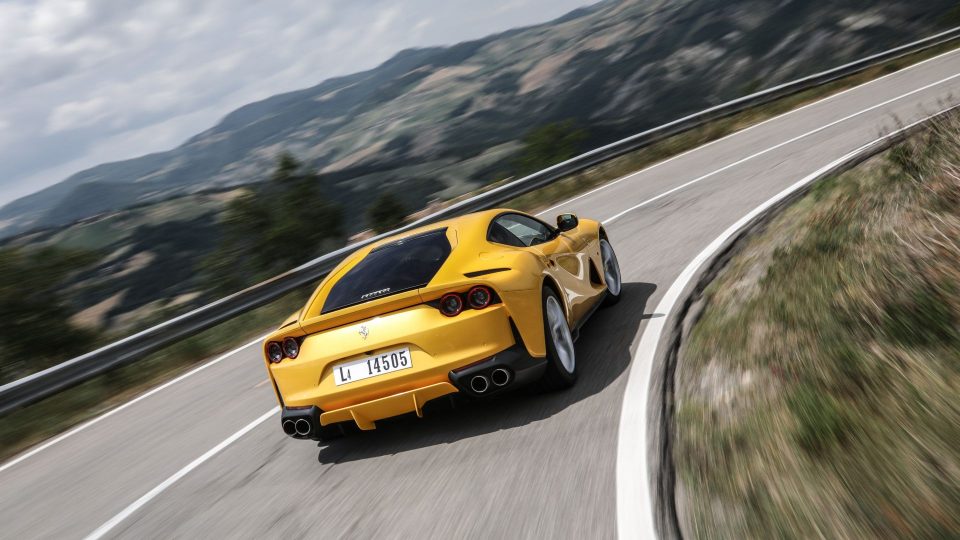
On motorway jaunts, the Ferrari feels slightly out of its comfort zone, like a stallion testing the reins. Gear ratios are six percent shorter than its F12 predecessor, which makes for a busy 2,500rpm at 70mph. There’s not much sneeze-factor in the steering and an ever-present roar from the tyres. You can also expect fuel economy in the teens (the official average is 17.5mpg).
Still, I’d gladly endure mild tinnitus and ruinous V-Power bills for what comes next. Turn off the motorway, find a good B-road, preferably well-sighted with some very long straights, and flick the manettino to Race mode. Now Mr Hyde comes out to play. The Ferrari reacts with violent acceleration, barely contained wheelspin and a feral howl that freezes the blood. Opportunities for full throttle are frustratingly rare – even on dry tarmac – but cresting that V12 wave is something you’ll never forget.
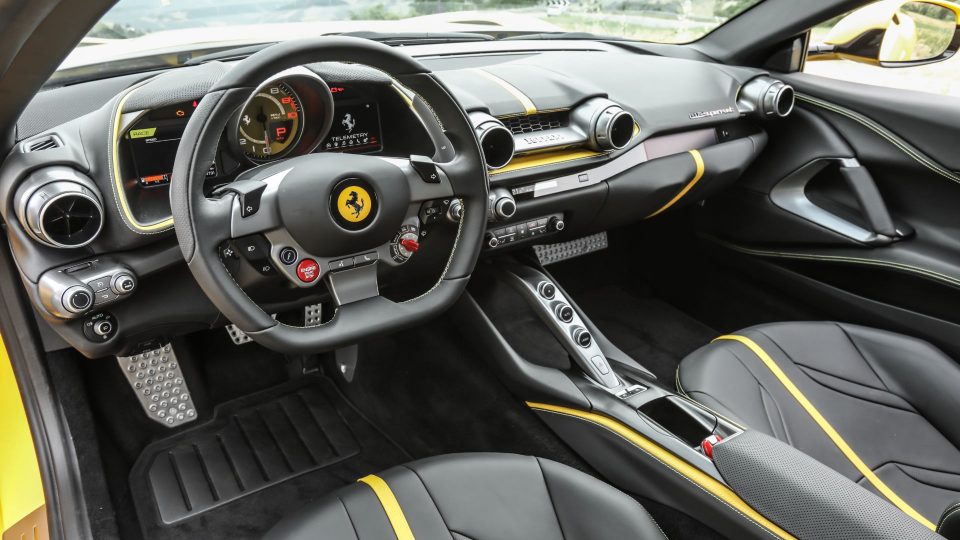
The Ferrari’s engine is so intense, so all-consuming, it almost overwhelms the experience. Despite huge grip and an arsenal of chassis tech – rear-wheel steering, Side Slip Control, Ferrari Power Oversteer and more – it frequently threatens to overwhelm my talent, too. Where an F8 Tributo is malleable and accessible, the 812 Superfast is edgier and more intimidating. It feels mad, bad and dangerous to know, as if Ferrari has shoehorned the motor from a 70s F1 car into something capable of passing an MOT. And I rather like that.
The £263,033 Superfast only has two real rivals. The £229,625 Aston Martin DBS Superleggera, described by former CEO Andy Palmer as a “brute in a suit” is more of a well-mannered muscle car than a highly strung road racer. Also, its V12 is twin-turbocharged, lending it a less distinctive character.
Then there’s the £356,000 Lamborghini Aventador SVJ, which does boast an NA V12, but looks and feels very different: mid-engined, wildly extroverted and hamstrung by its awful automated manual gearbox.
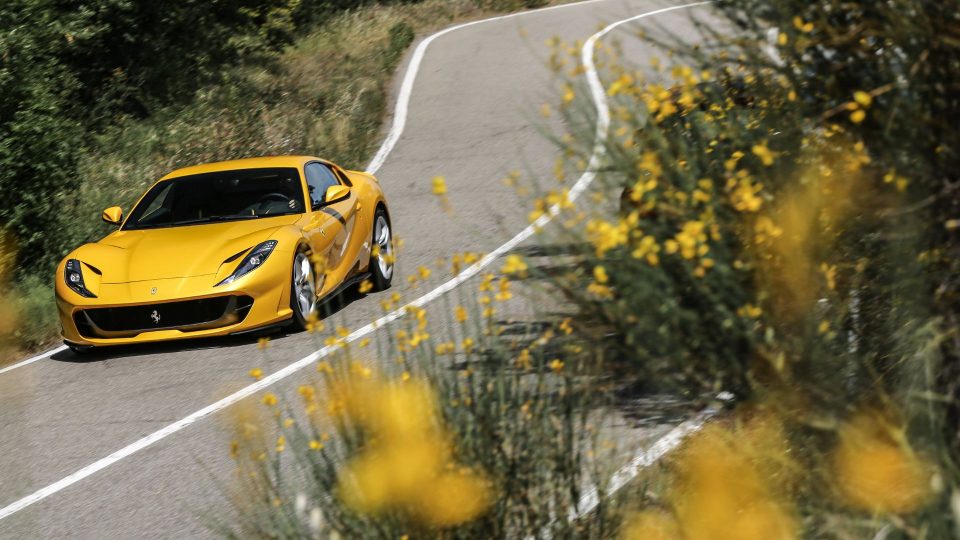
I’ve been fortunate enough to drive all three and the Ferrari left the most vivid impression. You park up with a mild sense of relief, endorphins rushing and fingertips tingling, then after five minutes you long for another go. The sense that the Superfast may be the last of its kind, existing on borrowed time, only makes the experience more special. Oh, and it has the best engine you can buy. Definitely.
Tim Pitt writes for Motoring Research
PRICE: £263,033
0-62MPH: 2.9sec
TOP SPEED: 211mph
CO2 G/KM: 366
MPG COMBINED: 17.5